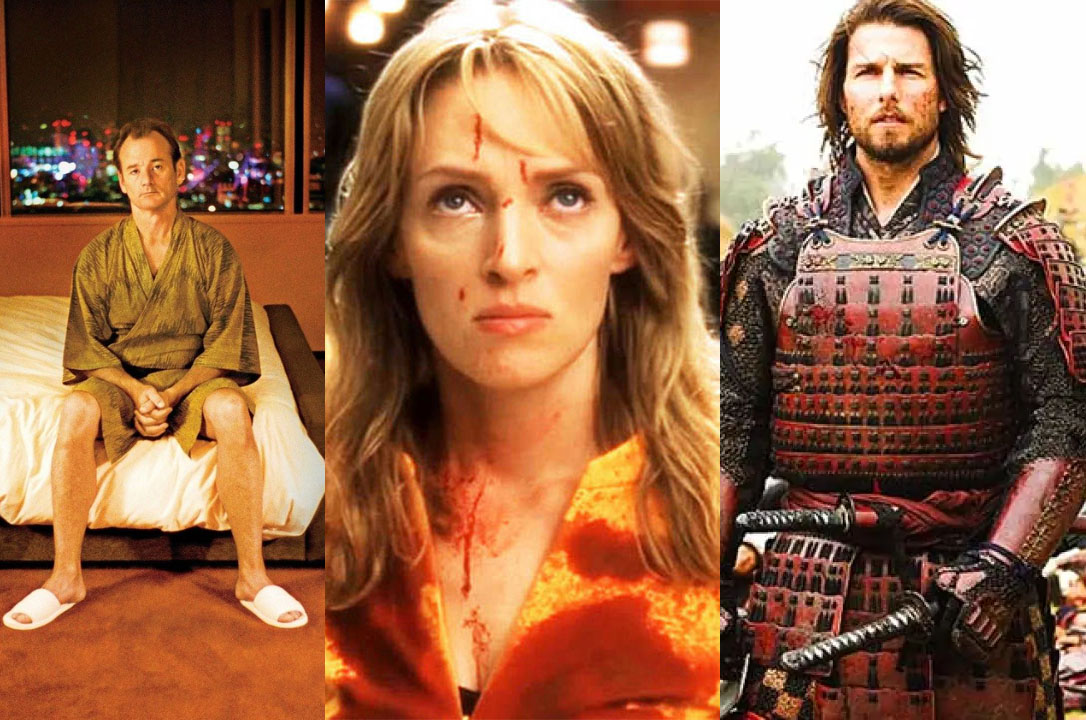It’s always fun to dig up old reviews; this one dates back 20 years, when Japan-oriented cinema was having a moment. — HL
Cherry blossoms. The neon luminosity of a midnight alley, subway trains soaring overhead. Tales of honor lost and regained. Kimonos and pop music and pachinko parlors and yakuza. And ninjas. Lots of ninjas.
World cinema fads come and go in the States. Yesterday’s French New Wave gives way to today’s Korean horror flicks, to tomorrow’s Bollywood spectacles. And yet our fascination, our uneasiness, with Japan continues. We stare Japan down as it has always stared us down: as a carnival, a monolith of quirks and culture, something to be regarded quizzically and referenced liberally. They sell high school girls’ panties in vending machines, we sell automatic weapons for one and all. They rule with bullet trains that arrive exactly on schedule, we rule in the deployment of CGI to lovingly portray a body as it smashes to the pavement after a 40-story fall. And so we must co-opt Japan, just as it has co-opted us since World War II, for we both steal in order to understand. Thus Guiliani’s Times Square resembles Shibuya in all its garish illuminated glory, and before we catch Sex Machine Guns in concert in Tokyo, we enjoy “the Legend of Whopper” at a Burger King in the Ikebukuro district.
The fall of 2003 was a watershed of sorts for our cinematic obsession with japonaiserie: three films, critical darlings at that, with Japan on their minds. One in the present (Lost in Translation), one in Fantasyland (Kill Bill, Vol. 1), and one in the past (The Last Samurai). In all of them, we find abiding affection, disillusion, and confusion about the American condition vis-à-vis Nippon.
Lost in Translation (2003, Dir. Sofia Coppola):
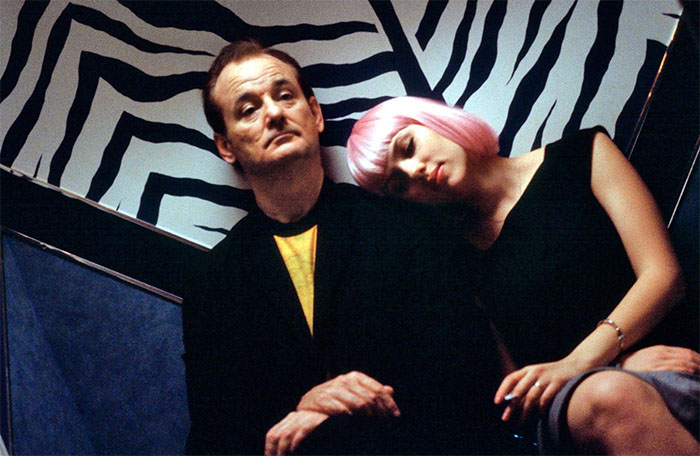
Just when I had spent time in Tokyo, I thought, “Oh, I really want to film this, and I love the way the neon at night looks.” That was really the starting point of the story though. I never thought about setting it somewhere else.
Sofia Coppola, Screenwriter’s Monthly interview
If nothing else, Sofia Coppola’s Lost in Translation is a valentine to the way Tokyo neon looks at night to American eyes. Playful, evasive, and tipsy, it says little about its characters, and even less about Japan, but it’s also canny enough to recognize its own slightness. The script is a framework of situational tics and ellipses, just enough skeleton to support the film’s vaporous atmosphere as it centers on two disaffected souls: Charlotte (Scarlett Johansson) and Bob (Bill Murray). Prematurely disillusioned, aimless, she’s undergoing a twenty-something crisis as her photographer husband (Giovanni Ribisi) gallivants with rock stars and old flames. Bob is essentially Bill Murray after a few too many drinks and setbacks, an aging movie icon reduced to shilling for Suntory whiskey, jet-lagged and rumpled within his Armani suit, suffering non-conversations with his unctuous wife back in the US of A. The two meet, they talk, they meet some more, they sing karaoke, they sleep together without sleeping together, and they part.
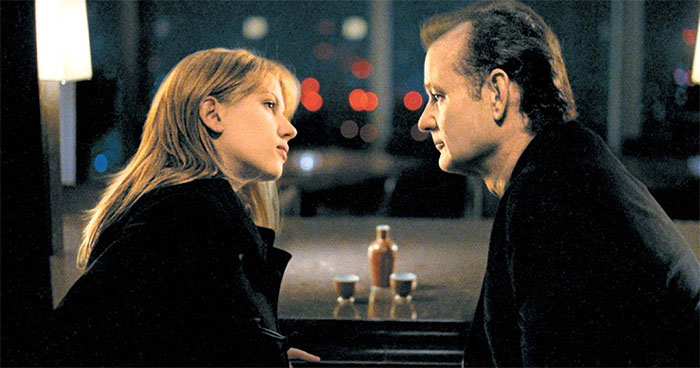
Rather desultory, that plot, and the same goes for the characterization. Charlotte’s J.D. Salinger-style ennui comes off like a course in Vague Dissatisfaction 101, and Bob can be summed up in quotations: “middle-aged, lonely standup comic.” As for penetrating looks at Japanese society, nope: Lost offers up clichés as if they are newly minted wonders. A middle-aged hooker purrs at Bob in accented English, “Lip my stockings.” Bob and Charlotte bond over dance-step arcade games (so 1998). We have bonsai tree trimming classes, sex club harlots bursting with leather and breasts, American bar singers contributing strident covers of “Scarborough Fair.” The Japanese characters, faceless and unnamed, are totems, lingering on the edges like set decoration, serving as a locus of cultural misunderstanding here, a bit of easy comedy there.
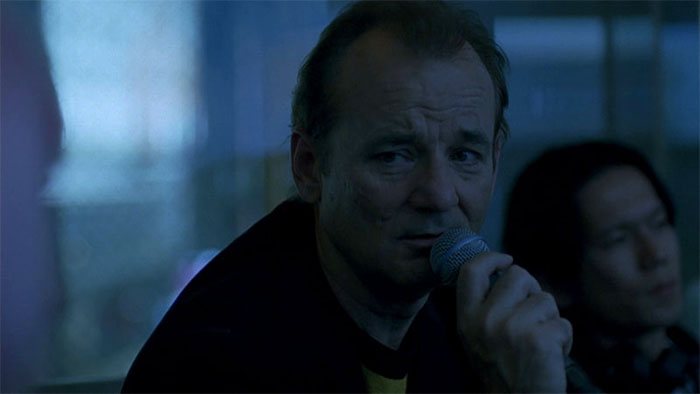
But this is all secondary. What really matters are those gorgeous alien shots of Tokyo landscape, the way skyscrapers and the rainbow splashes of neon reflect off car windows in time with songs by My Bloody Valentine and the Jesus and Mary Chain, or how Murray’s monotone karaoke reading of Roxy Music’s “More Than This” fails to conceal reservoirs of longing. The story may be merely an excuse to film the Japanese night life, but there is nothing indulgent about Coppola’s camerawork. Hotel corridors swallow Bob and Charlotte in antiseptic black, yet they find refuge in the fizz of a habachi eatery, or the thickets of crowds converging across electrified intersections. It is as if we are being reassured: Yes, we outsiders, we happy few. More than any film in a while, Lost in Translation successfully evokes the oxymoron of feeling lost, hip and hypnotized by a strange land. In its fits and starts, the movie is a ready primer to life in urban Japan 2003, all uncertain smiles and subterranean romance.
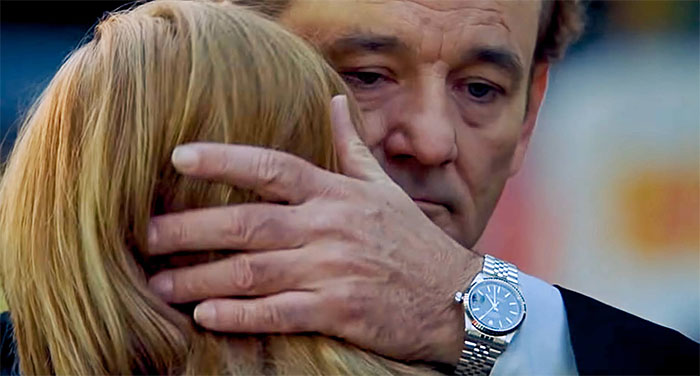
Despite its Stranger-in-a-Strange-Land perspective, there is something about Coppola’s film—its reticence, its refusal to push matters, and finally, its glorious candy-pop conclusion in which Bob whispers something to Charlotte that reduces her to tears—that evokes the delicacy of Japanese pop art. One thinks of the effervescent innocence of a Japanese soap opera in which a chaste kiss is something to be thirsted for, or director Yasujiro Ozu’s momentous tales in which nothing and everything happens. Coppola doesn’t yet have Ozu’s deep reserves of humanity or his expansive vision, but she has the rhythm and the eye. One suggestion: Sign up Bill Murray for your next film, pronto.
Kill Bill Vol. 1 (2003, Dir. Quentin Tarantino)
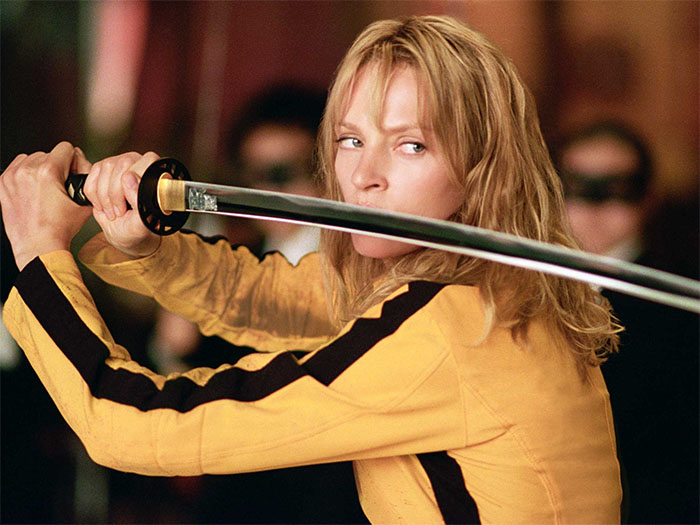
Bang bang, I shot you down
Nancy Sinatra, “Bang Bang,” theme from Kill Bill Vol. 1
Bang bang, you hit the ground
Bang bang, that awful sound
Bang bang, I used to shoot you down.
If Lost in Translation is a triumph of mood over the terrible weight of story, Quentin Tarantino’s Kill Bill, Vol. 1 is the victory of pastiche over personality. Lost rolls over us like a fog, but Kill Bill is a Cusinart of Asian grindhouse cinema mashing away at 100 miles per hour, Action Set Piece A to Action Set Piece B. In short, ace assassin Bride (Uma Thurman) has been shot and left for dead by her traitorous associates, her baby ripped from her womb, and “Revenge is a dish best served cold,” as the Klingon proverb that opens the film proclaims. Like an inexorable video game march towards a final battle with the Big Boss, the Bride parades through a hit list that includes O-Ren Ishii (Lucy Liu), Elle Driver (Daryl Hannah), and Vernita Green (Vivica A. Fox) to confront the titular Bill, played offscreen in Vol. 1 by a bone-dry David Carradine. All of this is packaged as the Asian midnight flick of our wet dreams, flush with cheesy ’70s funk (thank you, RZA), dialogue that reads like samurai pronouncements translated by a stoner, screen wipes, and whacked-out monikers like Sophie Fatale, Go Go Yubari, and the Deadly Viper Assassination Squad (or, ahem, DiVAS).
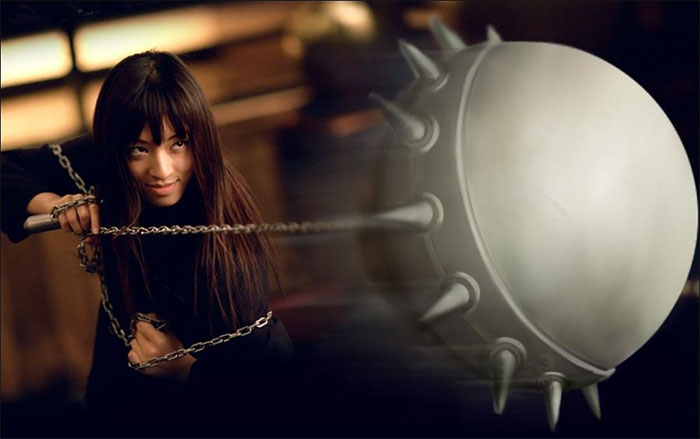
Unlike the overly reverential Crouching Tiger, Hidden Dragon, Kill Bill makes no bones about stealing the tropes that have nourished many a chop-socky revenge flick—and throws in a few dozen other cinematic tips of the hat. In Tarantino’s populist nirvana, audiences as well as critics are encouraged to play the game of spot-the-reference: a little Brian DePalma split-screen action for Daryl Hannah (accompanied by a musical sting from Bernard Herrmann), a little Stanley Kubrick in Go Go Yubari’s eye shadow, a little Bruce Lee in Uma’s orange jumpsuit. Slate’s David Edelstein may claim that the movie’s penultimate moment—the Bride hacking at her enemies in silhouette against an electric blue background—harkens to An American in Paris, but any action aficionado worth her salt can tell you that Tarantino is ripping off Chuck Norris’s Forced Vengeance. Still, give Tarantino credit: rather than xerox his influences, he heads straight for the source. Japan’s Production I.G., the animation studio behind the cyberpunk classic Ghost in the Shell, contributes a bloody vignette for a flashback scene, and those in the know will recognize Chiaki Kuriyama, star of the similarly deranged Japanese classic Battle Royale, playing the same role as Go Go: homicidal schoolgirl with maces on numchucks.
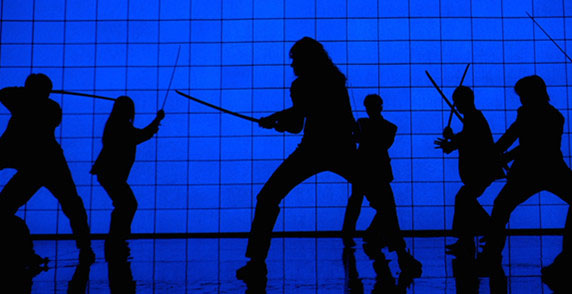
Is there a point to all this glorious cross-genre pollination? How should we respond to a Japanese tea house that was actually filmed in Beijing, to a climactic fight scored with samples from nearly every kung fu masterpiece ever made, to Lucy Liu’s Japanese mob boss (who the script emphasizes is one-half “Chinese-American” in a strange gesture towards cultural awareness)? The answer is troublesome. Tarantino wants to imbue this high-powered slaughter machine with emotional depth, and thereby drag it above genre, but in attempting to do so he torpedoes the film’s energy. A scene of a grieving Thurman drags on for at least a minute, as if we’re meant to think, Yes, we must take this all seriously. Contrasted with the blithe slaughter that occupies two-thirds of the running time, the moment seems excessive, incredibly enough. Meanwhile, those crucial scenes of bloodletting seem unlived-in, like an empty coloring book. Pulp Fiction may now appear dated thanks to the army of imitators in its wake, but Tarantino’s sniggering yet brutal approach to murder from that film is missed; in its place is the hardest working man in the kung fu business, aided and abetted by fight choreographer par excellence Yuen Woo Ping. Technically proficient, respectful of the source material, but devoid of true personality.
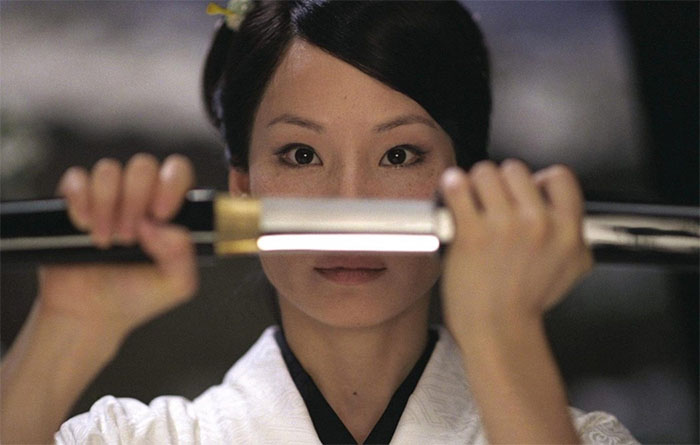
Nevertheless, Kill Bill reassures us that in the hierarchy of Tarantino’s fevered, B-movie imagination, Japan is clearly king. The point is underscored by a cameo by “Street Fighter” Sonny Chiba as Hanzo, Swordmaker Extraordinaire, who all but walks away with the show. Avuncular and joking in accented English, he slices up fish in an Okinawa hut when he’s not busy sharpening the blade to end all blades and dispensing fortune-cookie philosophy that serves as the film’s lynchpin (“Revenge is like a forest”). His character is the only one that we can believe carries on an autonomous existence outside the dictates of plot. Likewise, the climax in the tea house between Thurman and Liu evolves from all-out Hong Kong martial arts extravagance to a classical one-on-one duel, pregnant with pauses and elegant slashes of sword—an orgasm borrowed and blue from Akira Kurosawa and Toshiro Mifune classics like Yojimbo (you see how difficult it is to escape those references).
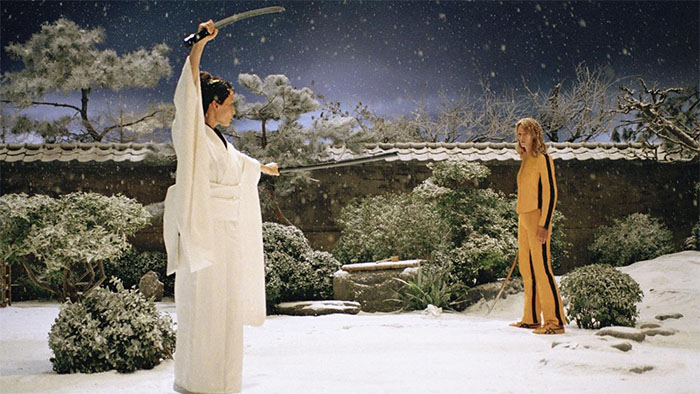
Sure it’s nothing new, but through the fever of Tarantino’s American eyes, the film as a whole can be seen as the ultimate refresher course in the history of Japanese cinema, from old-style honor to modern-day splatter. It remains to be seen if Kill Bill Vol. 2 reveals any further method behind the madness, but if Vol. 1 is any indication, we can take comfort in the fact that as much as Japan may change, it still stirs the souls of cinephiles (and cine-philiacs) everywhere.
[Author’s note: My quick review of Kill Bill Vol. 2, having seen the movie since the above was written: as much a tribute to spaghetti westerns as Vol. 1 is a salute to Japanese cinema—not as flamboyant as Vol. 1, but more deeply felt. Viewed in retrospect, the duology can be seen as the beginning of Tarantino’s pure genre filmmaking phase, which lasted all of one more movie (Grindhouse/Deathproof in 2007) before he merged pulp and history in Inglourious Basterds and every film he’s made since then.]
The Last Samurai (2003, Dir. Edward Zwick):
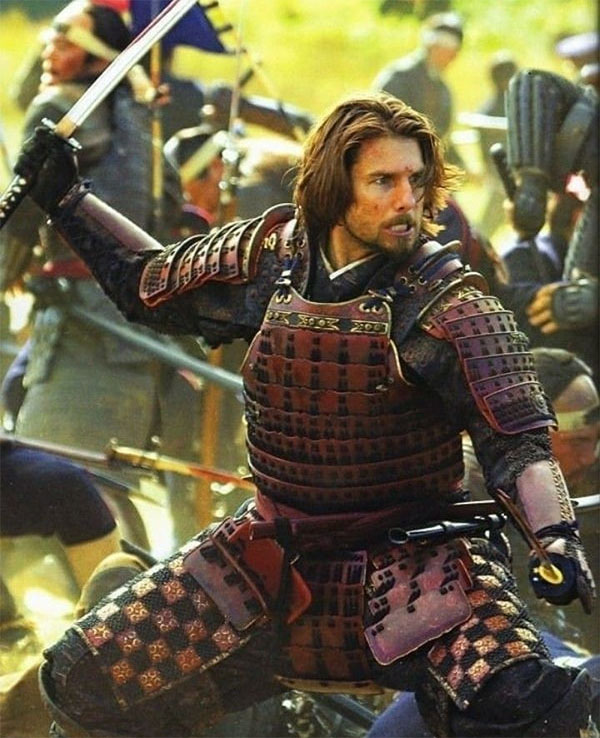
I know why you don’t talk. You don’t talk because you’re angry. You’re angry because they make you wear a dress.
Tom Cruise, The Last Samurai
Not surprisingly, the “prestige” picture in this trio of Japan-obsessed flicks, the one starring Tom Cruise (only the universe’s biggest box office star), the one with the ornate 19th century setting and panoramas of army combat, the one generating the most Oscar buzz, is the one that is complete and irredeemable hooey. While Kill Bill is sincere in its aping of Asian influences, The Last Samurai uses them as one uses costumes at a fancy dress ball, all of it honoring the coronation of Tom Cruise as Serious Actor.
Play this Mad Lib game: Take Kevin Costner’s Dances with Wolves. Replace every reference to “Native American” with “samurai,” and “the West” with “Japan.” The Last Samurai‘s reading of 19th century Japan is at a similar Cliffs’ Notes level. Slick, lean, pleased with its exoticism, Last Samurai isn’t as sanctimonious as Costner’s magnum opus, but it also lacks Dances‘ cumulative power and attention to detail. With all the kimonos and lush landscape on display, the movie has little use for vision, or a point to make—particularly distressing given the context. How could one not find contradiction and drama in the convulsions of the post-Tokugawa Era, where the traditions and cruelties of the feudal system came face to face with the machinelike efficiency of New Japan? How could the filmmakers squander the story of Americans and Japanese in uneasy collision for the first time in history? Against all odds, The Last Samurai finds a way.
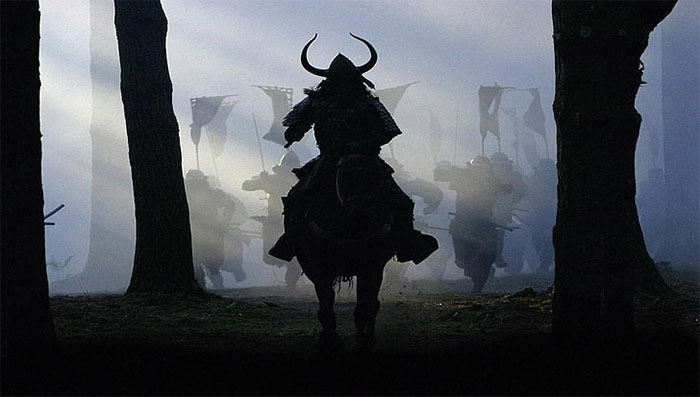
The script (written by John Logan of Gladiator and Star Trek: Nemesis fame) follows a familiar template: spiritually tormented hero comes into contact with enlightened culture and rediscovers his soul. Of course, “rediscovers” is the key word here, and “enlightened culture” might as well be written in invisible ink. To our mounting horror, we realize that Tom Cruise’s shellshocked Civil War veteran, Nathan Algren, is a fierce fighter, a drunkard, a solider without a cause, and—gasp!—an honorable man. We also learn that the key to understanding samurai culture is to be taken captive, continuously pummeled (no Christ complex here) and finally learning that having “no mind” is everything.
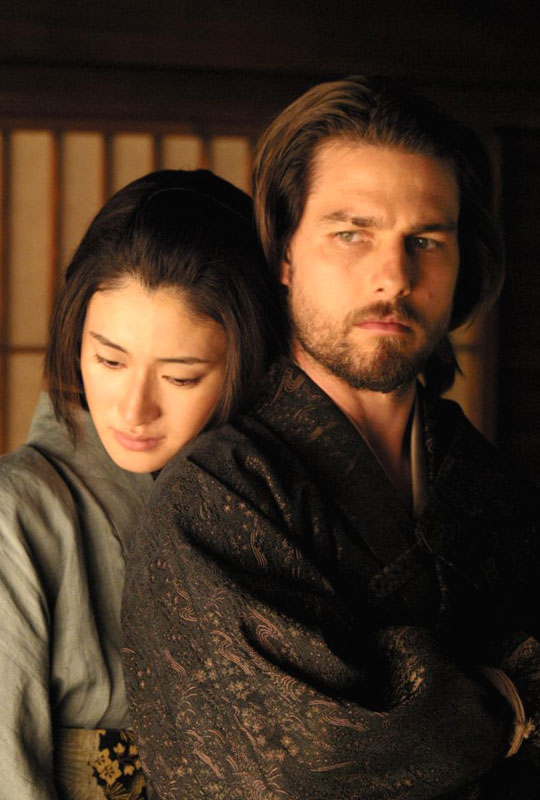
To be fair, Cruise does yeoman’s work as Algren, but the role (and Logan’s script) refuse to allow for his usual preening quirks; there’s little left to his persona besides Solemnity Lite. So it goes for the direction—Edward Zwick isn’t known for a light touch and he doesn’t show it here. He does have one masterpiece to his credit: the Civil War drama Glory (1989), which also came down hard on the easy beats (racism is bad), but had a protagonist in Matthew Broderick who gracefully ceded the spotlight to supporting players, allowing searing performances by Denzel Washington and Morgan Freeman to balance out the whole. In Samurai, Ken Watanabe is a witty, ferocious presence as Katsumoto, Algren’s opponent, mentor, and eventual brother-in-arms, but the rest of the cast plays stick figures (tough, hard-to-please warrior, beautiful Japanese maiden ripe for the plucking, charming brats who want to be fighters). And just so we won’t fall asleep, we also have ninjas. Dozens of ninjas. Ninjas versus samurai—one reels at the thought of what Tarantino could have done with it.
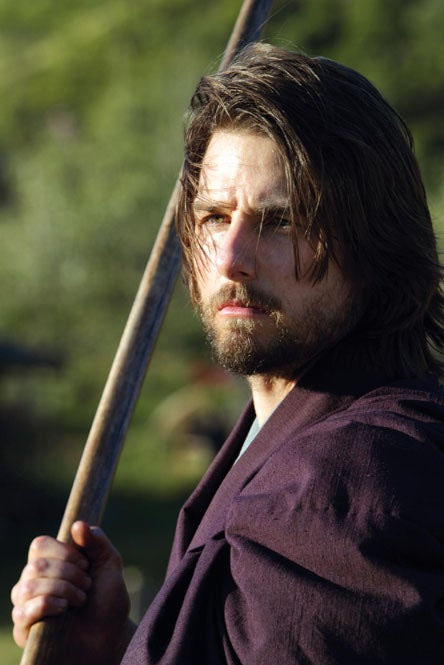
It’s all choreographed for maximum middlebrow impact by Zwick, who steals a few moves from the far superior Glory: soulful exchanges of glances and dialogue, dabs of culture-clash humor, and a final tragic charge by our outmoded samurai, noble savages (do we hear Sioux caterwauls in the distance?) versus a modern army of Gatling guns. If one looks hard—very hard—at the film’s conclusion, one can catch a whiff of liberal self-hatred, as the Americans arm Japan with the very weapons which will lead to Japanese imperialism in the next century. But that is all mere sideshow to the intricate production design, a few blatherings on duty and honor and loyalty, and a lack of insight about Japan beyond props and body armor. In the end, what is most important is the closing shot of Cruise’s blubbering face as he gains redemption and shows the Japanese emperor a thing or two about honor. And then it dawns on us: Tom Cruise is the last samurai! It’s nice to know that Hollywood is alive and well.
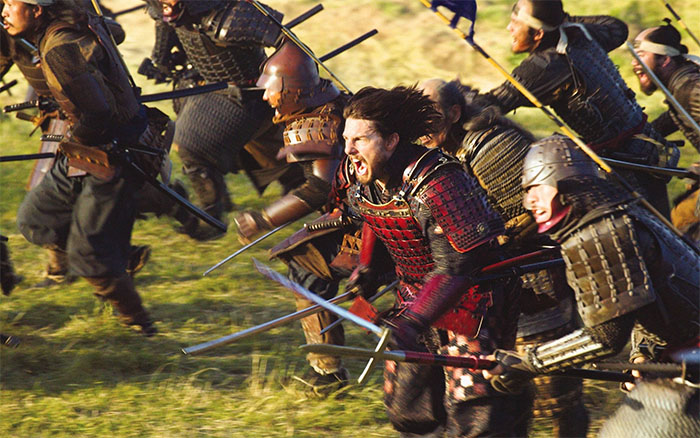
Curiously enough, The Last Samurai has been a critical and popular success in Cruise’s adopted Japan—or perhaps it’s not so surprising after all. Both Nippon and the U.S. share the same elemental taste for hype, for dreams of historic heroes and Fantasyland, even if it means twisting and distorting those selfsame dreams all out of proportion and sense. Bosom buddies indeed. ■

